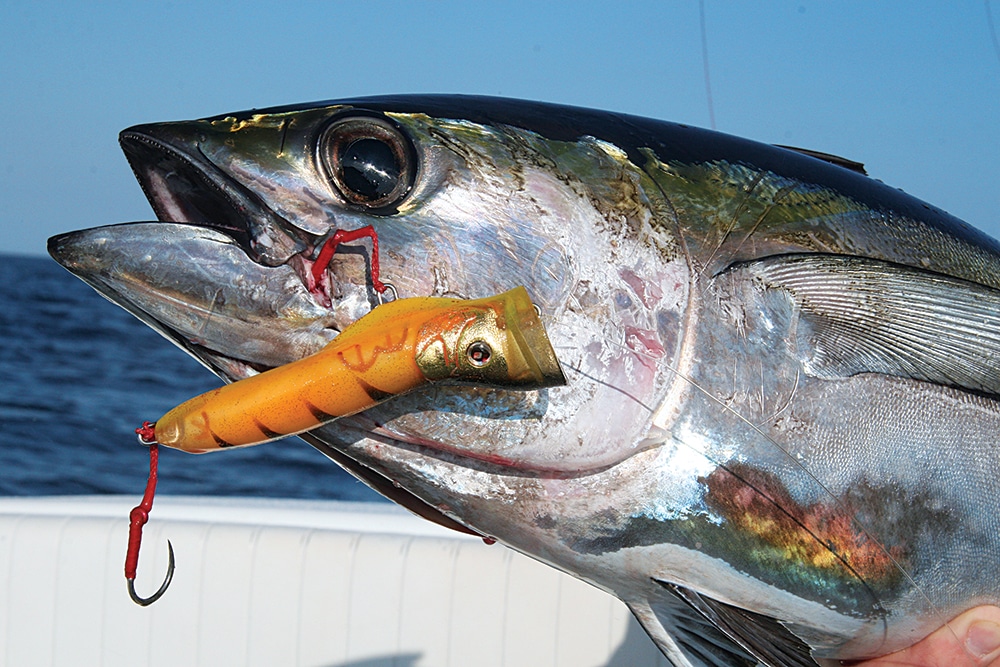In Texas, football is king. Whether it’s the Friday-night lights of high school, the Saturday madness of Longhorns and Aggies, or Sundays on the gridiron with Cowboys and Texans, the Lone Star State loves football. It should then come as no surprise that one of the most abundant pelagic species on the western Gulf Coast shares a sobriquet with the popular pigskin.
Throughout most of its range, the blackfin tuna (Thunnus atlanticus) is a piscatorial afterthought. Lacking the mystique of its more-glamorous cousins — such as the hulking bluefin or cosmopolitan yellowfin — the blackfin tuna is often relegated to passenger status alongside dorado, wahoo and kingfish in offshore iceboxes. To most, the blackfin tuna is the undersize third-string halfback that gets to suit up on game day but can’t crack the two-deep.
Texas anglers know the value of the Rudy-esque battler. The scrappy fish becomes a mainstay along the Texas coast beginning in July. Offshore boats from Beaumont to Brazos Santiago begin to search for anchored shrimp boats and deepwater oil and gas rigs to prospect for blackfin tuna.
Red for Black
Red was the primary color of late summer and fall on the Texas coast for years, with most offshore focus directed at the red snapper fishery. When the National Marine Fisheries Service began to tighten groundfish regulations and impose shorter seasons for the federal species, many anglers up and down the coast took notice of the black-and-blue attack that swarmed warm Gulf waters with their spread-style attacks.
“When July rolls around, big blackfin become really thick offshore, starting around depths of 150 to 180 feet,” says Port Mansfield’s Capt. Chad Kinney. “You can pull up on a shrimper on the way, troll and catch 15 to 20 very quickly.”
Kinney says these are larger fish, averaging a brawny 17 to 20 pounds, with a few brutes pushing 25 to 30 pounds. Blackfin numbers become so thick that offshore party-boat captains switch their attention from red snapper after the federal season closes, and begin long-range and overnight trips for blackfin and yellowfin.
“Party boats run out to the floater rigs on overnighters, and just have a blast with the blackfin,” says Capt. Dan Green of Galveston. “They also target amberjack and yellowfin, but those blackfin are the stars of the show.”
Texas’ blackfin tuna fishery is a year-around proposition, but the peak season is from July through fall, when “footballs” aggregate to spawn. The western Gulf Coast’s relative proximity to the Alaminos Canyon — where a variety of tuna and billfish species spawn — and the opening of the Gulf shrimping season mean that fishermen have plenty of areas to fish. Flotillas of shrimp boats dumping bycatch and providing cover concentrate tuna schools within accessible range for anglers.
“They come in pretty close in July,” says Kinney. “If you find a shrimp boat in deep water (150 feet or more), you should find some blackfin around it. Even if the [shrimper’s] crew isn’t culling, blackfin will usually stay around the boat.”
Early and Late Cuts
Kinney usually makes a quick stop first thing in the morning at any shrimp boat he spots anchored at the correct depth, especially if the boat is culling bycatch after a night’s trawl. It doesn’t take very long to see if there is predatory activity around the boat.
“If there are any bonito working through the cull, we’ll start throwing out some chum to draw the fish closer,” says Kinney. “You’ll see the blackfin dart in and out among the other fish, and that’s when we really get to work on bringing them up.”
If there are no blackfin tuna turning up in short order, or the sharks and schools of bonito are too thick to negotiate, Kinney will move on and look for another shrimp boat. Also, he’ll turn farther offshore to troll. If Kinney finds good numbers of blackfin, his crew will begin cutting and chunking in earnest.
Kinney says that it is important to stock up on a good quantity of chum similar to the shrimper cull (a variety of croaker, Spanish sardines, sand trout and other small finfish). Kinney often uses 150 to 200 pounds of chum.
“You have to strike a balance in how much chum you use,” says Kinney. “You want to use enough to get interest up, but you don’t want to feed them so much that they will deny your bait.”
The playbook is straightforward and familiar to tuna anglers: Draw the fish by chunking diced baitfish into the current and, once they are feeding, send out a chunk with a hook such as a 3/0 Mustad 39950. Green usually tempts in the fish with Spanish sardines, and then uses chunks of menhaden for bait because bonito and other less-desirable species seem to hit the menhaden less readily.
Kinney suggests letting the bait drift back as far out as possible until a fish grabs it, then put the reel in gear and start winding. The fish will hook itself in almost every instance.
Both Kinney and Green agree that if they aren’t able to score blackfin around the shrimp boats early, they often return to the boats later in the day when the action from other species settles down. The blackfin will hang around in the shade of the boat and respond to chunking.
“The great thing about blackfin tuna is that they’ll follow your boat as it drifts, as long as you keep chunking,” says Kinney. “I can drift a half-mile off the shrimp boats and have the tuna follow my chum line.” Bonito and other species will usually stay near the shrimp boat.
Fishing around the shrimp boats allows anglers to use light tackle for blackfin tuna. Green prefers the Avet LX reel spooled with 60-pound monofilament and an 80- to 100-pound fluorocarbon leader. Kinney uses Penn Torques and Internationals of similar size. Kinney will also go lighter if the blackfin get picky, dropping down to 30-pound line and 40- to 60-pound fluorocarbon leader. Downsizing also includes using a smaller, 2/0 short-shank hook.
Kinney adds that fly aficionados have a blast participating in the Texas football action. When chunking gets the fish into a frenzy, an angler with an 8- to 10-weight fly rod, a collection of white feathers, and a stout heart has a chance to hear the reel sing.
Backup Play
If the easy score is not available around the anchored shrimp boats, anglers can go long and spread the field for blackfins. Floating oil and natural-gas rigs — such as Boomvang and Perdido Spar — trace the continental shelf and offshore canyons, and are reasonably accessible to Texas offshore anglers. Southern passes such as Aransas, Mansfield and Brazos Santiago are close enough to the rigs for anglers to plan day trips. Fishermen headquartered farther on the upper Gulf Coast — where the curve of the coast makes a north-northwestern turn away from the shelf and canyon rigs — usually make overnight runs.
“You can really get into the blackfin on those overnight trips,” says Green. “The rigs are thick with them, with a lot of the bigger ones hanging off them. It isn’t uncommon to score more than 100 per night around the floaters.”
Green says that the most effective technique for night games with Texas footballs is fishing with knife and Butterfly metal jigs. Blackfin as well as yellowfin (see “Tailgate Crashers”) blitz the frenetically worked pieces of metal as they dart through the black water. Green says effective colors are blue, green and yellow. (The captain prefers a yellow color that fluoresces after exposure to light.) Diamond jigs are also effective, especially if tuna are down deep.
Texans loves their football, whether it is an early start before the day’s action begins, or a night game when the anglers can really light up the scoreboard. The price of admission is a big bag of chum, a collection of jigs, and willingness for some hard contact.
Tailgate Crashers
Capt. Chad Kinney warns that prudent anglers should keep a 50- to 80-pound outfit rigged with a pitch bait while chunking for blackfin tuna. You never know what might be lurking in the blackfin huddle.
“You’ll be tossing chum and drawing them closer to your boat, and suddenly you’ll see a big yellowfin tuna blast everything,” says Kinney.
The yellowfin start turning up in September and October, and are more than willing to blitz the blackfin lines. These fish range between 75 and 120 pounds, and hang out in the secondary to pick off any chunks that smaller fish miss. The same free-lining techniques used for blackfin work for the bigger yellowfin.
Capt. Dan Green adds that the yellowfin share the same quarters as blackfin around the floater rigs on the continental shelf and canyons. They also like metal jigs, as do blackfin. When a triple-digit yellowfin snags an offering meant for its smaller cousins, the situation can become very intense quickly.
Other species anglers encounter while chasing Texas blackfin include ling (cobia), kingfish and a variety of bottomfish, including amberjack. Check local and federal regulations for bag limits and closed seasons on respective species.
For the Record
Blackfin might not measure up to their yellowfin and bluefin cousins in weight, but this modest-size tuna is still capable of reaching 50 pounds if they live past five years. The current world record weighed 49 pounds, 6 ounces, caught off Marathon, Florida, in 2006. And the Texas state record isn’t far behind: John Alvarez Jr. landed a 38.89-pounder in 1988. With larger blackfin more available today and limited in range to just the western Atlantic, will a Texas angler be the one to break that 50-pound barrier?
About the Author
Calixto Gonzales, a regular contributor to Sport Fishing, has fished up and down the Western Gulf Coast all his life, and believes strongly that Tom Osborne should have gone for the tie versus the win against Miami in the ‘83 Orange Bowl.
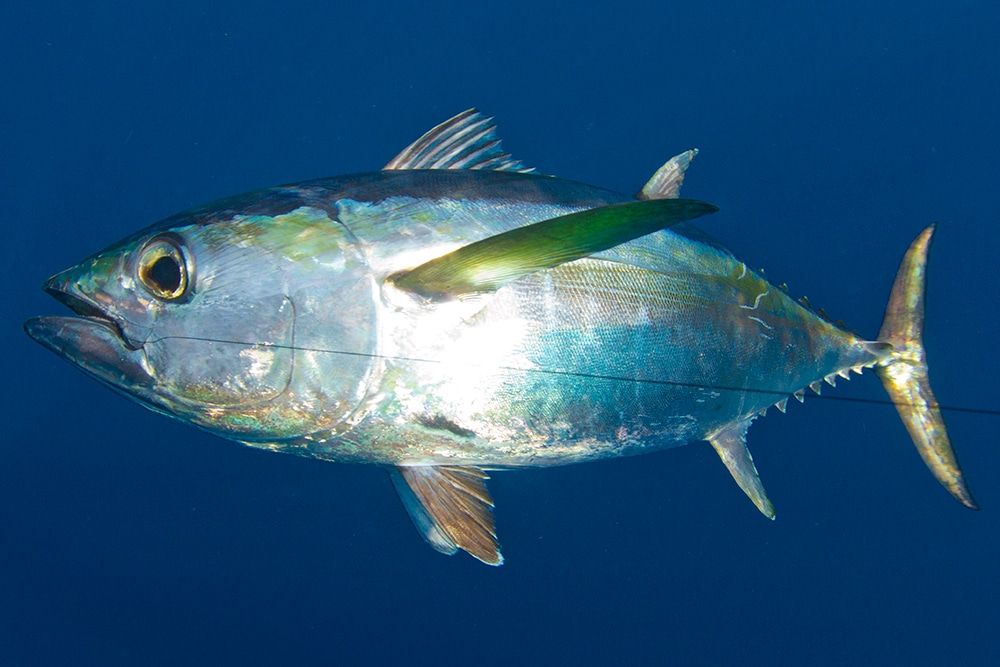
Texas Football Fever
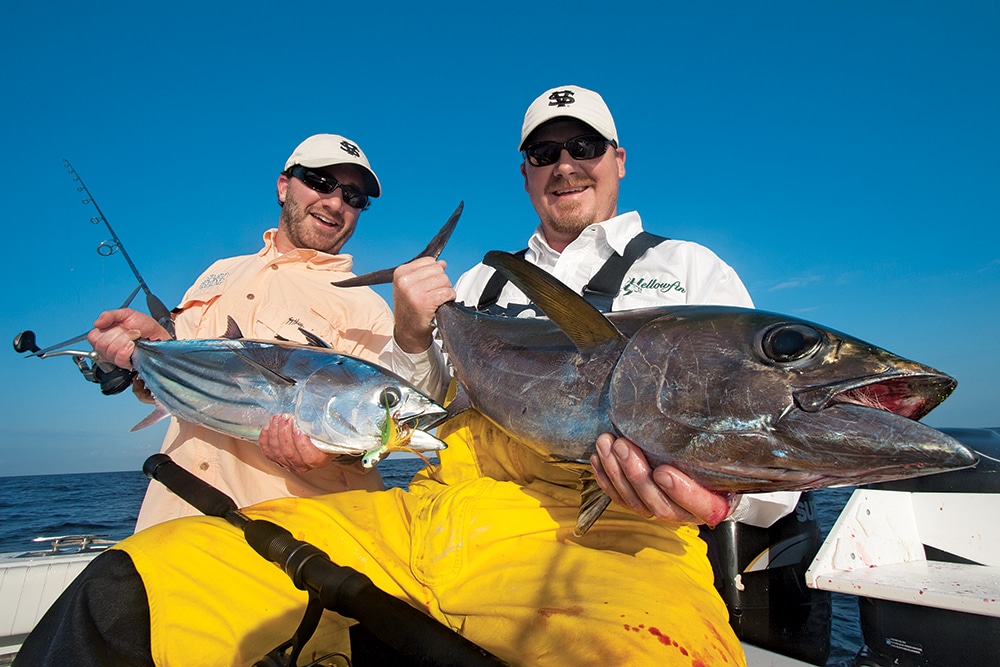
Texas Football Fever
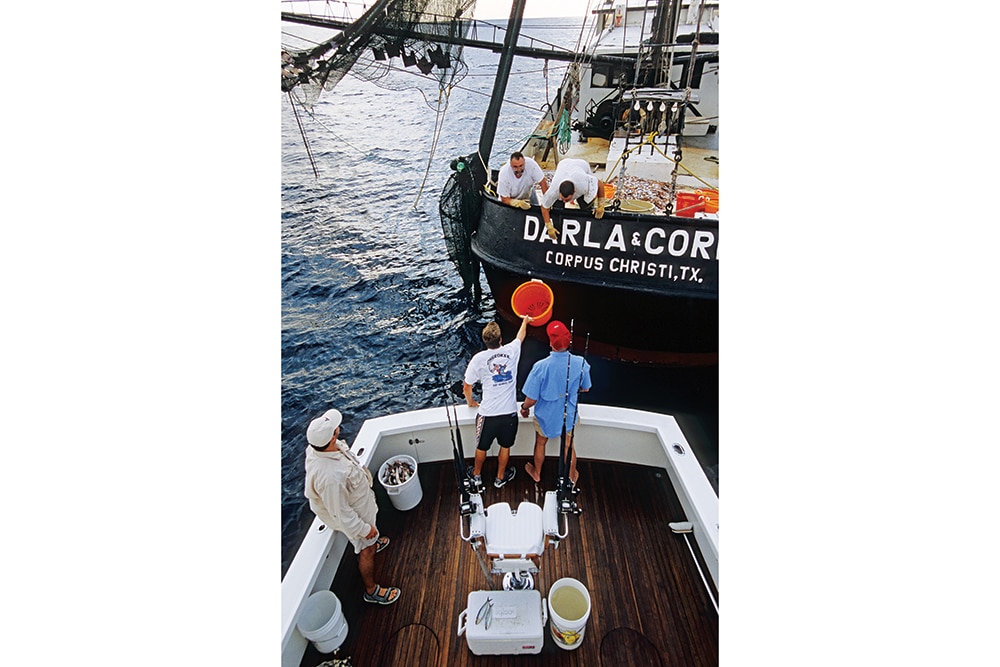
Texas Football Fever
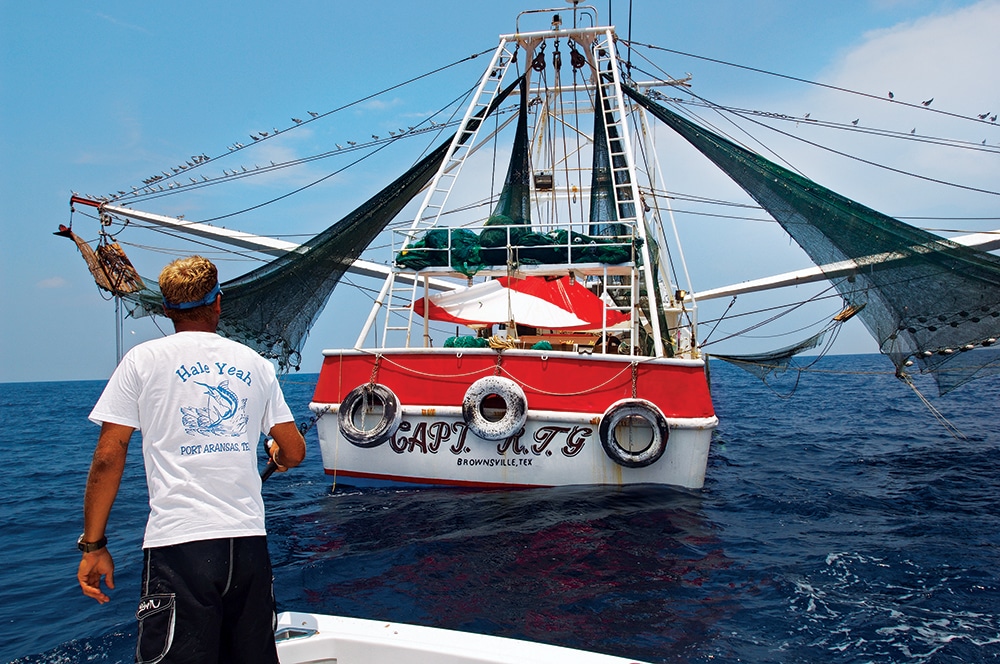
Texas Football Fever
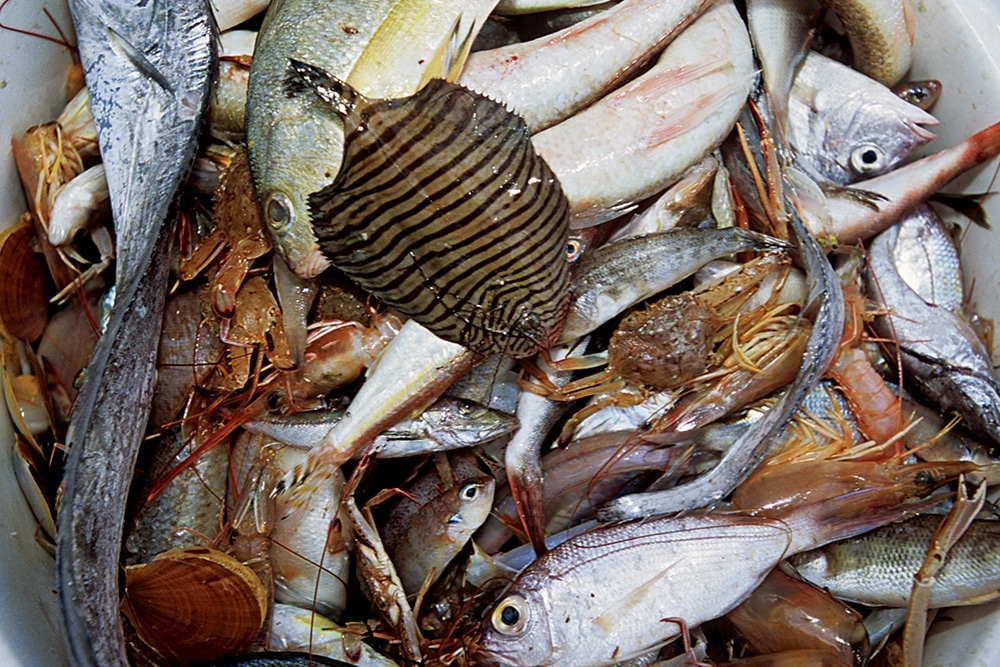
Texas Football Fever
